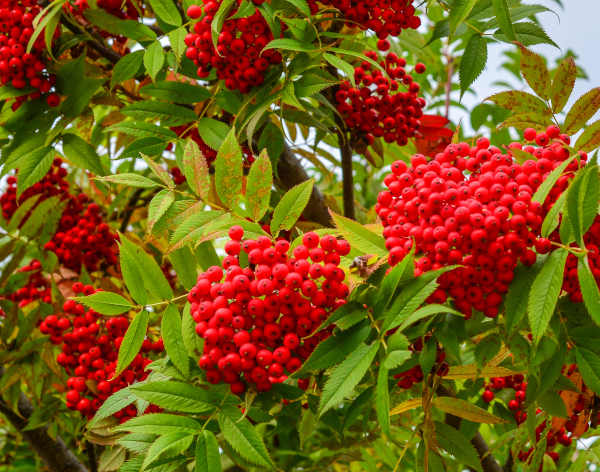How to grow Nandina
Nandina domestica is a species of flowering plant in the family Berberidaceae, native to eastern Asia from the Himalayas to Japan. A small, upright, elegant evergreen shrub with a bamboo-like habit reaching around 2m in height. Plants have compound leaves and lanceolate leaflets which are purplish when young and in winter. Small white flowers emerge in large panicles during summer, followed by shiny red berries which look like peppercorns.
A robust, easy going shrub which is renowned for its colour shifting foliage. This enchanting plant provides renewed interest during all four seasons with sunset red tones on the edges of leaves in spring, then lush clusters of tiny white flowers in summer as the foliage turns pale green alongside gree berries in a good season. Come autumn the leaves take on a vibrant red and burnt orange hue and the berries redden, remaining long into winter.
Plants are not actually related to bamboo, despite the name, and are not considered invasive. Moreover, they are adaptable enough to be used as hedging, planted in container or as a focal point in the garden. They lend themselves well to oriental style gardens and reach varying heights between 50cm to 1.5m with spreads of 60cm to 1.2m. We currently supply a range of varieties with evergreen or semi-evergreen foliage which are hardy to between -5 and -15°C (H4 to H5). They are low maintenance, needing just a light trim in spring and also look particularly good in an urban or contemporary gardens as well as jungle-style planting schemes. There are different cultivars to choose from that offer a variety of leaf colours to suit your needs.
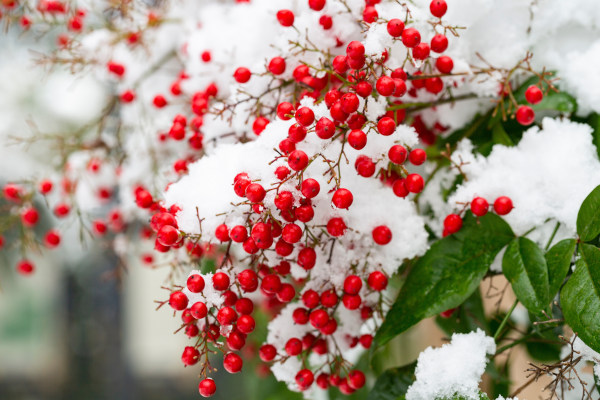
Zantedeschia is a genus of flowering plants from the family Araceae and is native to southern Africa. With a rich history dating back to the Ancient Romans, these deciduous or semi-evergreen perennials have been used as a symbol of celebration. Zantedeschia was Named after Professor Giovanni Zantedeschia, an Italian botanist.
There are two main forms of Zantedeschia: hardy and tender. Hardy forms of the plant can be grown outdoors, enjoy moist soil and full sun or partially shaded conditions - these are known as Arum lilies. Tender forms of Zantedeschia prefer being grown in containers or pots and should be brought inside over the winter - these are known as Calla lilies.
With tuberous flora in all colours from whites, yellows and oranges to deep reds and purples, Zantedeschias are not to be overlooked in any garden, as long as they have sufficient sunlight to grow in.
Ready to learn more about growing Zantedeschia? Read on for all there is to know...

Key Information
Soil pH
Position
Hardiness

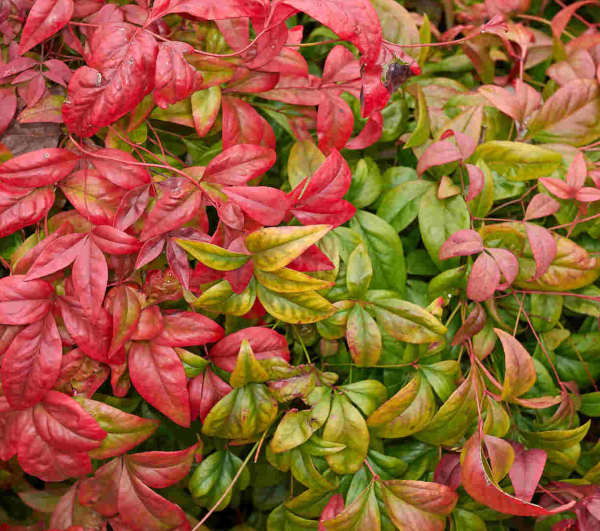
Where & when to plant Nandina
Position - Full sun or partial shade
Soil - Moist, well-drained soil
Flowering Period - Summer
Hardiness - Hardy H4 or H5 (-5 and -15°C) dependent on variety
Plant in spring or autumn when the soil is still warm and there is little prospect of extreme heat or drought. Position in a sunny, well drained spot that is sheltered from cold, drying winds.
Plants do best in a slightly acidic soil, so a mulch of bark chippings after planting will not only suppress weeds but also assist with this.
Plants do not need pruning though they can be lightly trimmed and tidied up in spring.
How to plant Nandina
In the ground
- Clear the chosen area of weeds.
- Dig a planting hole several times larger than the root ball.
- Place the plant in the hole, ensuring the top of the root ball sits level with the surface of the soil. Too low and the plant may rot, too high and the roots can dry out.
- Backfill with soil and firm in gently.
- Soak well with water.
- Mulch around the base with ericaceous compost or a pine bark mulch.
In a container
- Choose an appropriate container, ensuring there are plenty of drainage holes.
- Use a good quality ericaceous and multi-purpose potting compost mix some horticultural grit mixed in for drainage. If not already present in the compost (check the description on the bag) some slow-release ericaceous plant food.
- Start by partially filling the pot with compost; enough so that when placed on it the upper surface of the root ball is about 3cm lower than the top of the pot.
- Infill all the space surrounding the root ball with compost, firming down with your fingers then adding a little more so the plant is held tight.
- Pick up the pot (if you can!) and lightly tap on the potting bench or ground a few times to help further settle the compost around the plant.
- Soak well with water.
- A mulch with horticultural grit will look attractive and help to prevent a ‘cap’ or crust forming on the top of the compost (something container plants can suffer due to the artificial nature of their watering).
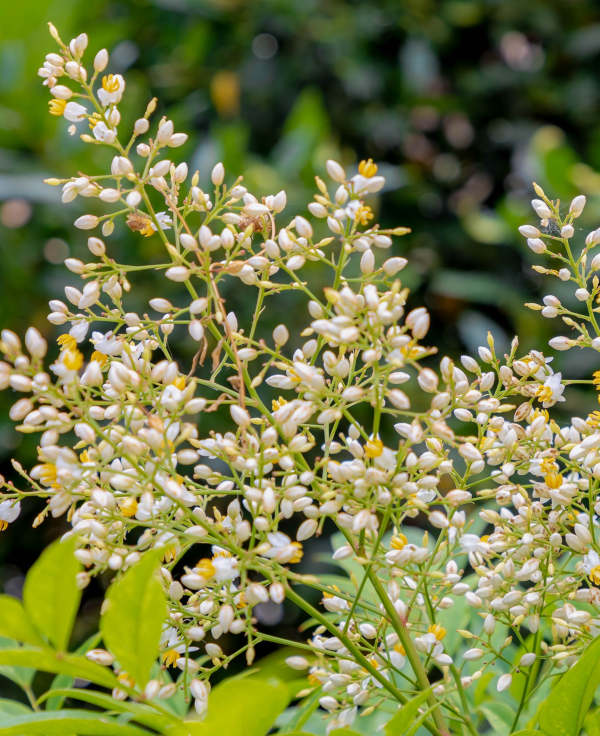
What to plant with Nandina
Gardens with acidic soil present an exciting opportunity to grow some of the most beautiful flowering shrubs there are. Try creating multi-storey impact with crinodendron, hydrangea, enkianthus and physocarpus as the top layer, and vaccinium (blueberry), nandina and leucothoe as underplanting. Smaller, acid-loving plants at ground level complete the picture – think gardenia, liriope muscari.

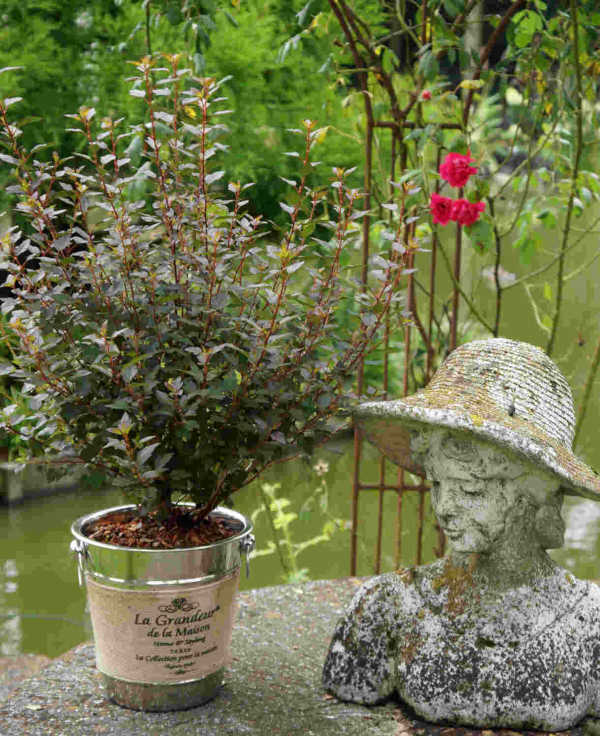

How to care for Nandina
Pruning and Deadheading
This wonderfully low-maintenance shrub requires little pruning, other than the removal of dead, diseased, damaged, and crossing branches in mid to late spring.
Watering
Water until established, and then in exceptionally dry spells thereafter.
Container-grown Nandina domestica will require more regular watering throughout the growing season. Allow the top few centimetres of compost to dry out between soakings.
Be careful not to overwater as this can cause harmful root diseases and rot.
Cold Protection
Nandina domestica is reliably hardy and will withstand frost down to -5°C to -15°C dependent on variety. Check the details of your chosen plant and, where appropriate, shelter pots or protect plants in the ground accordingly.
Pests and Diseases
Nandina domestica tends to be trouble-free although may, very rarely, be susceptible to honey fungus and some viruses if not in peak condition.
How to propagate Nandina
Nandina can be propagated by semi-hardwood cuttings in summer.
- Find non-flowering shoots 5-10cm long and snip off the plant.
- Put them in a plastic bag straight away to prevent drying out.
- Fill a container with a compost mix which is at least 50% perlite (or if you prefer, as we do, 100% perlite).
- Remove the lowest third of leaves.
- Insert the cuttings into the compost and water lightly. Several cuttings can be put in the same container if there is enough space to do this without them touching.
- Place in a propagating unit with bottom heat if you have one or covered with a plastic bag on a windowsill if not (out of direct sunlight).
- Keep the cuttings misted and occasionally watered until they root. You will know this has happened when roots emerge out of the bottom of the container.
- Gently remove rooted cuttings and pot them into individual pots. Grow on in an unheated conservatory or greenhouse they are big enough to be planted out.
Common Nandina Questions
Do Nandina like sun or shade?
Plants grow best in full sun with certain varieties also able to tolerate some shade
Can you grow Nandina from cuttings?
The most reliable way is to grow from semi-hardwood cuttings. Occasionally Nandina domestica will self-propagate by runners which have formed roots – these can be cut and replanted immediately with a degree of success.
How fast do Nandina grow?
Plants will grow by 10-15cm per year if they are established specimens on planting. Smaller variety will start more slowly.
How deep are Nandina roots?
Nandina has a strong deep root system which can be 60-75cm deep in maturity. Plant in containers if this may be an issue to you.
